Sulfur reduction of metal oxides
When I was first getting serious with the hobby and scrambling to thermite every metal oxide I could find, I did a side experiment exploring the idea
of using sulfur rather than aluminum. I wondered how the ambiguous redox properties would behave – react with the oxygen to form SO2, react with the
metal to form MxSy, both at once? Unfortunately my life wasn’t very stable then and I’ve lost those notes, and my brain wasn’t very stable
either and I forgot exactly what it did, other than that it was cool (I have a vague memory of a glassy, metallic grey material but I think I am
misrecalling my first boron trioxide prep). But it’s easy enough to reproduce, so let’s try it!
| Code: |
CuO mw (g/mol): 79.54 S mw (g/mol): 32.06
CuO(g) CuO(mol) S(g) S(mol) CuO:S
5.91 0.074 4.77 0.149 0.5
7.17 0.090 3.20 0.10 0.9
11.93 0.15 3.21 0.10 1.5
15.9 0.20 3.21 0.10 2.0
|
I tried four ratios of cupric oxide to sulfur; in each case the powders were mixed thoroughly, then poured into the concavity in the bottom of an
upside down soda can and the excess removed such that it was level. This was ignited by touching with a heated glass rod.
In general, the reaction mixture would stick to the glass as it ignited; sometimes the burning mass would come away wit the glass when it was
withdrawn. I usually tried to do initiate the reaction near the edge so that I could scrape it off on the side of the can. A “front” of reaction
would then spread from the point of initiation, as a puffing up of the packed powder and a bluish color, sometimes with flame.
Cu:S = 0.5
This was difficult to ignite and burned with a slow, fragile flame with occasional flares.
The residue was mostly a nondescript grey powder with traces of metallic copper.
Cu:S = 0.9
This burned quickly at first with a sputtering blue flame, before settling down to a small, calm blue sulfur flame.
The residue was a light and fluffy powder with a slightly foamy appearance, with a greenish ring in a blue-black background centered on the initiation
site (this was the first experiment, and I hadn’t started from the edge). Traces of metal copper were visible in the green ring.
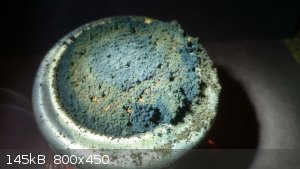
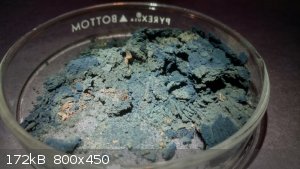
Cu:S = 1.5
When ignited, the reaction mix expanded slightly. A reaction front passed slowly from one side to the other, giving off gentle puffs of gas but no
flame.
The residue was a compact, crunchy pancake of spongy copper, surrounded by a thick coat of green/blue-grey powder.
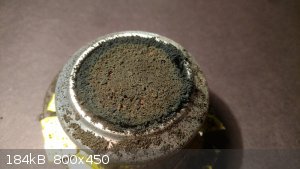
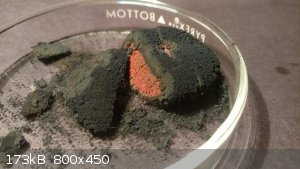
Cu:S = 2
When ignited, this gave a lot of smoke & SO2 but little flame, and puffed up from a flat surface level with the lip of the can, forming a
volcano-looking cone.
When the residue was examined, it turned out that the reaction mix hadn’t so much expanded as it had been drawn upwards in the center, forming a
compact bit of metal copper. Upside down, it looked almost toroidal where the mixture had been drawn up from the concavity, leaving self-like
structures behind. Within the mass was a great deal of flaky copper metal.
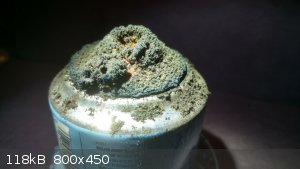
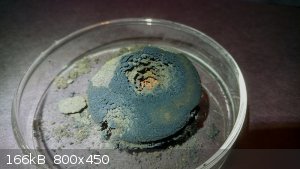
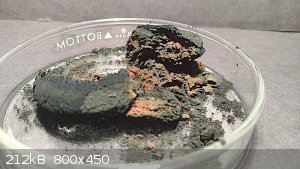
The volcano was surprising and very cool to see in action. I'm now wondering what would happen if the CuO was added to a pool of already-molten
sulfur.....
al-khemie is not a terrorist organization
"Chemicals, chemicals... I need chemicals!" - George Hayduke
"Wubbalubba dub-dub!" - Rick Sanchez
|